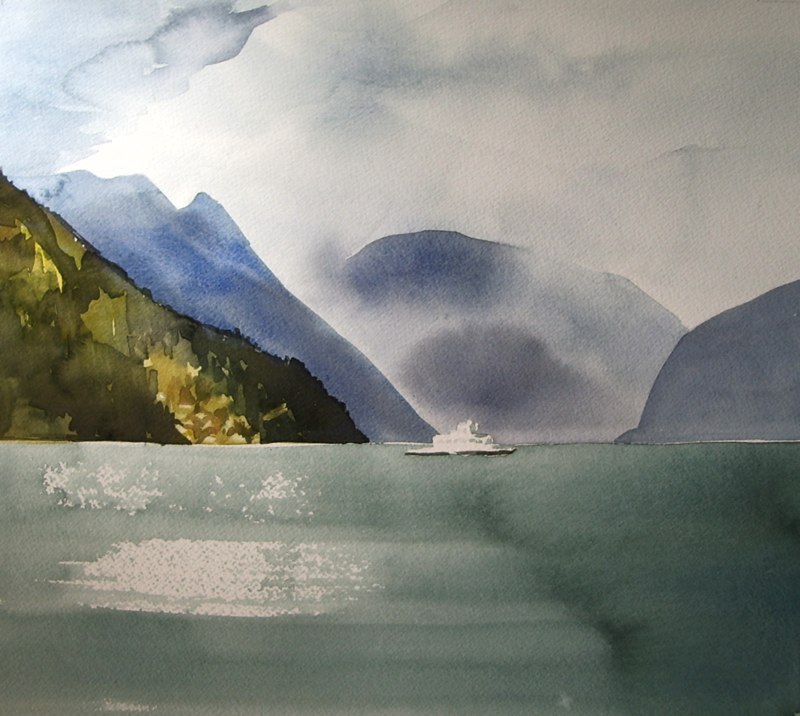
Brush strokes count when it comes to watercolour. How much paint vs water makes a very big difference.
Painting in watercolours is a process of mark-making. Although many watercolour painters may do an underdrawing in a pencil, they are less likely to do so with the brush; don’t paint in outlines – paint in shapes. The brush creates patches of colour which catch the light of an object. Watercolours are all about light.
The watercolour painter should explore a range of brushes and strokes, as well as different paints and papers. But, as a general rule, cheaper materials will hinder your development in watercolours. Believe in yourself: you deserve the best.
Painting in watercolours differs from other media in several ways. Watercolours have an immediacy that is quite different than painting in oils or acrylics. Many of oil painter Balthus’ works were painted over the course of ten or more years; most watercolour paintings are finished in less than an hour. A more important difference is that watercolours can be said to be painted backwards; a portrait painter covers a sheet of paper with colour except for the untouched white of the eyes. Look for, and work with, the white.
Learn to be critical of your own work and paint the same scene or subject often to help you better understand it. Paint in different light. Paint at different speeds. Paint the negative space around the main subject(s). Paint how you feel about the subject. Be bold. Embrace (and take credit for!) beautiful accidents.